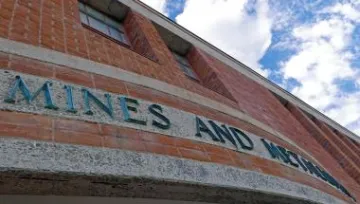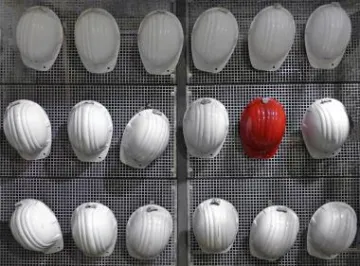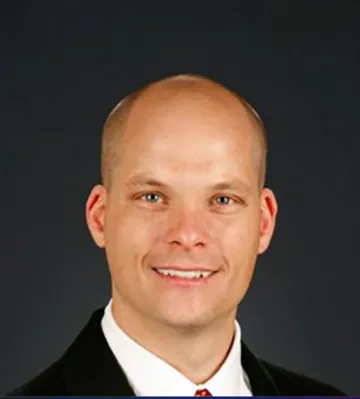The University of Arizona’s Lowell Institute for Mineral Resources aims to close an educational gap in efforts to keep miners safe and healthy.
This initiative is part of the Lowell Institute’s drive to help the University of Arizona’s many programs to become a leading resource for mining education, training and research, and comes in response to ongoing discussions with mining industry advisors.

Nationwide look reveals gaps
The Lowell Institute’s International Safety, Health and Risk Program took a look at what universities offer in terms of health, safety and combined health and safety programs and how many specifically address mining. Their study showed that there are no health and safety degree programs specifically for mining. Of the 17 university mining programs that offer mining engineering degrees the majority had one to two classes on mining health and safety, and several had none.
The UArizona’s undergraduate mining engineering program has a single 1-credit safety course requirement and the graduate certificate in mining occupational safety and health has two required classes and one elective class.
“We must not assume that every college Health and Safety Program will adequately prepare students and/or working professionals for mining-focused health and safety career(s),” according to the eight-page “Assessment of Accredited Occupational Health & Safety Educational Degree Programs in the United States” report.
The authors of the May 22, 2020 report are public health graduate student Jonathan Fischback and Dr. Eric Lutz, director of the International Safety, Health and Risk program. They assessed university health and safety education programs that are accredited through four bodies: American Board of Engineering Technology, Council on Education for Public Health, National Environmental Health Science & Protection Accreditation Council and Institute for Safety and Health Management.
Looking at general health and safety programs offered across the U.S., there’s a noteworthy deficit of offerings in the Western U.S., the report said.
“The West, Southwest and Rocky Mountain regions offer 53 percent of the domestic mining engineering programs, but only 25 percent of the total Health & Safety degrees.”
Lack of training increases risk
The Lowell Institute launched the study after feedback from the industry that there is inadequate mining health and safety education and training. That’s concerning since the Mining Safety and Health Administration (MSHA) often cites inadequate training as a causative or contributing factor in health and safety incidents.
“Gaps in mining health and safety competency, education and training result in negative safety and health consequences on mine sites,” Lutz said. “We felt it necessary to build a mining health and safety education and training program.” The study helped form the basis to develop such a program.
MSHA, a part of the U.S. Department of Labor, can issue and enforce regulations that protect mining workers. It provides guidance and technical support on how to comply with regulations. But, Lutz said, MSHA rules are mostly decades old. It takes professionals trained in state-of-the-art tools and techniques to implement and maintain high standards of care in modern mining situations. “Most mine operations recognize that safety and regulatory compliance are two distinct functions,” said Lutz. “The health and safety of the miners are best served when resources are applied to both efforts.”
Proposals for new UArizona degrees

A working proposal for a UArizona program, currently under review by the Lowell Institute’s Mining Health & Safety Technical Advisory Committee and other stakeholders, envisions new bachelor’s and master’s degrees, along with the graduate certificate, in mining health and safety. It also addresses the educational needs of working professionals who can’t commit to a full academic program by providing them professional training offerings.
A possible occupational health and safety degree program would include core classes with an industrial health and safety track and a mining health and safety track. Those core classes for the bachelor’s degree might cover fire safety and prevention, occupational toxicology, accident investigation, health risk assessment, risk reduction methods and use of statistical software.
The bachelor’s mining safety track would include such topics as mining methods and operations, mining hazard recognition, explosives handling and safety, mine ventilation, and MSHA regulations. The graduate program would include core classes with advanced principles and practices in safety, environmental and occupational health, emergency management and fire services, and safety training and program development, program evaluation and biostatistics, as well as advanced study in specific mining safety and health issues.
Building from the feedback from the Mining Health and Safety Technical Advisory Committee, the UArizona Mining Health and Safety program design will be modular and nimble, and course content will reflect emerging mining technologies, methods, regulations, and workforce characteristics in order to meet the demand of the industry today and into the future. Some course offerings are expected in the Spring Semester of 2021 with full program launch in 2022.
Health and safety is one of several education and training areas that the Lowell Institute is developing to close the gap between what the mining industry needs in a workforce and what the UArizona offers to meet those needs.


